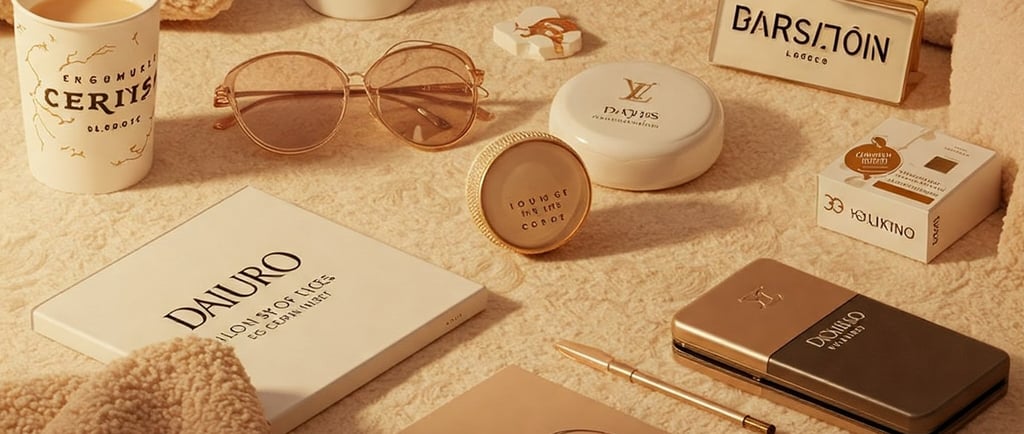The Performance of Luxury Brands and Their Growth Prospects


In recent years, luxury brands have faced an evolving landscape marked by changing consumer behavior, economic shifts, and new global trends. Despite these challenges, the luxury industry has shown remarkable resilience and growth. From fashion houses to high-end automakers, luxury brands continue to thrive, driven by a combination of affluent consumers, innovative marketing, and a focus on sustainability and personalization. This article explores the current performance of luxury brands and their prospects for growth in the near future.
Current Performance of Luxury Brands
Post-Pandemic Recovery and Resilience
The COVID-19 pandemic initially posed a serious challenge for luxury brands, with global lockdowns and travel restrictions leading to a significant decline in foot traffic to stores and a slowdown in the high-end tourism market. However, the recovery has been swift and robust. As economies reopen and consumer confidence rebounds, luxury brands have been among the quickest to regain lost ground.
According to a report by Bain & Company, the global luxury market grew by 17% in 2021, reaching a value of €288 billion. This growth continued into 2022, with luxury goods companies reporting strong sales across both physical and online channels. Despite the economic uncertainty and inflationary pressures, the demand for luxury items has remained strong, especially in key markets such as the U.S., China, and Europe.
Shift to Digital Transformation
In response to the pandemic, luxury brands accelerated their digital transformation. While historically reluctant to embrace e-commerce fully, many brands are now investing heavily in online platforms, virtual experiences, and social media engagement. Luxury fashion labels like Gucci, Louis Vuitton, and Prada have improved their online presence and digital storytelling, reaching a younger, tech-savvy demographic.
The luxury sector’s digital sales are projected to grow at a faster pace than traditional retail, making up approximately 25% of total luxury goods sales by 2025, according to McKinsey. Social commerce, live streaming, and influencer partnerships have also become integral to brands' strategies in capturing new customers, particularly Gen Z and millennials, who are increasingly influential in driving growth.
Strong Demand from Emerging Markets
While Europe and North America continue to be key markets, luxury brands are increasingly focusing on growth in emerging markets, particularly in Asia. China, despite recent economic fluctuations, remains a powerhouse for luxury sales, accounting for nearly 35% of global luxury spending in 2022, according to Bain & Company. Wealthy consumers in China continue to drive demand for high-end fashion, accessories, and beauty products.
In addition to China, other regions such as India, Southeast Asia, and the Middle East are becoming critical markets for luxury growth. Rising affluence and a growing number of young, sophisticated consumers in these regions present a significant opportunity for luxury brands to expand their footprint.
Key Factors Driving Luxury Brand Growth
Sustainability and Ethical Practices
One of the most significant changes in the luxury market over the past few years has been the growing importance of sustainability and ethical practices. Consumers are increasingly conscious of environmental and social issues, and luxury brands are responding by focusing on sustainability in their products and operations. Brands like Gucci, Stella McCartney, and Patagonia are leading the way with eco-friendly collections, ethical sourcing of materials, and commitment to reducing their carbon footprint.
Sustainability is no longer just a buzzword; it has become a key differentiator. Consumers, particularly younger generations, are more likely to support brands that align with their values, and luxury brands that fail to adopt sustainable practices risk losing relevance. As a result, the focus on circular fashion, transparency in the supply chain, and upcycling will continue to play a crucial role in the industry's growth.
Personalization and Exclusivity
Luxury consumers continue to seek unique, personalized experiences. In response, luxury brands are increasingly offering customization options for products, from tailored clothing to bespoke fragrances and even personalized packaging. This shift reflects a broader trend toward individuality and self-expression, with consumers willing to pay a premium for one-of-a-kind items.
Exclusivity remains a cornerstone of luxury. Limited-edition releases, collaborations, and VIP access to private collections are ways brands maintain the allure of rarity and scarcity. The rise of "hype" products—highly limited releases that create buzz and drive demand—continues to shape the industry, particularly in sectors like high-end sneakers, watches, and handbags.
Experiential Luxury and Lifestyle Offerings
As luxury consumption becomes more about lifestyle than just products, experiential luxury has gained traction. High-net-worth individuals are increasingly seeking experiences that offer a sense of status and exclusivity, whether through private jet travel, personalized vacations, or access to luxury events.
Brands are responding by offering exclusive experiences tied to their products, such as private fashion shows, luxury retreats, or even bespoke travel itineraries. For example, Louis Vuitton has partnered with prestigious events like the Formula 1 Grand Prix, providing elite consumers with unique experiences that go beyond product ownership.
The Role of NFTs and Digital Fashion
An emerging trend within the luxury sector is the rise of non-fungible tokens (NFTs) and digital fashion. These virtual goods allow consumers to own rare digital assets, such as digital clothing, shoes, and accessories, which can be displayed in virtual environments or even in the metaverse. Luxury brands like Gucci, Balenciaga, and Prada have experimented with digital collections and NFTs, tapping into a new wave of young, tech-savvy consumers.
The future of digital fashion is promising, with experts predicting that NFTs and virtual goods will become a significant part of the luxury market in the coming years. This innovation presents an opportunity for brands to extend their reach beyond traditional retail spaces and create new forms of luxury that exist purely in the digital realm.
Prospects for Growth
Looking forward, the luxury industry is poised for continued growth, with several factors contributing to its positive outlook:
Resilient Consumer Demand: Despite global challenges such as inflation and geopolitical uncertainties, affluent consumers are expected to remain strong drivers of growth. As wealth inequality continues to widen, the high-end market is likely to experience sustained demand.
Expansion into Emerging Markets: Growth in Asia, Africa, and Latin America will remain critical for luxury brands. These regions have growing middle classes with increasing purchasing power, providing new opportunities for brands to expand their customer bases.
Technological Integration: As luxury brands continue to innovate digitally, they will be able to reach new audiences, engage with consumers on a deeper level, and create immersive shopping experiences. The metaverse and digital fashion will likely become more integrated into the luxury landscape, creating new avenues for growth.
Sustainability as a Growth Driver: The commitment to sustainability will be a key differentiator for brands in the coming years. Consumers increasingly expect brands to prioritize environmental and social responsibility, and those that do so effectively are likely to see continued loyalty and growth.
Conclusion
The luxury industry is not only recovering from the setbacks caused by the pandemic but is also charting a course for a promising future. With strong consumer demand, a focus on sustainability, innovative digital strategies, and expansion into new markets, luxury brands are well-positioned to continue their growth trajectory. The key to long-term success will lie in their ability to adapt to changing consumer preferences, embrace new technologies, and maintain the exclusivity and prestige that define the luxury market. As these brands evolve, they will continue to be symbols of aspiration and refinement in a rapidly changing world.
